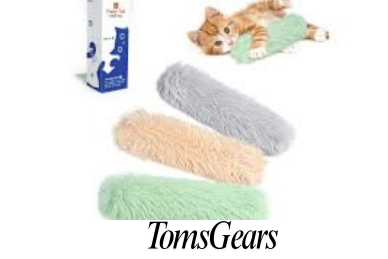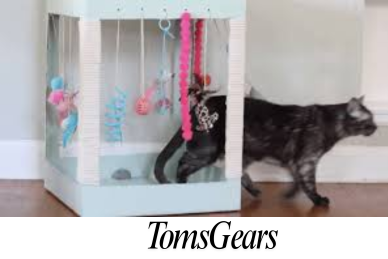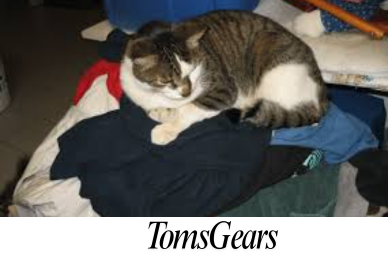How to Play with a Cat Without Toys: Engaging and Fun Play Ideas for You and Your Cat
Playing with your cat without toys can be just as engaging, stimulating, and fun as using traditional toys. Whether you want to minimize expenses, avoid clutter, or simply explore new ways to bond with your feline friend, there are numerous creative activities you can try. This article dives into various play ideas, ranging from interactive games to using everyday household items, ensuring that your cat remains entertained and happy even without store-bought toys.
Can You Play with a Cat Without Using Any Toys?
Yes, you can absolutely play with your cat without using any commercial toys. Cats are curious and playful by nature, and they often respond to interactive activities that tap into their hunting instincts. Using your hands, voice, or simple household objects can mimic the movements and behaviors of prey, keeping your cat engaged.
In a survey by the American Society for the Prevention of Cruelty to Animals (ASPCA), 68% of cat owners found that their cats preferred interactive play, like chasing or jumping, over static toys. This shows that a toy-free play session can be equally enjoyable and beneficial for your cat.
What Are Some Simple Play Activities You Can Do Using Only Your Hands?
Using your hands to play with your cat can be highly effective, but it should be done with caution to avoid accidental scratches or bites. Some fun and safe activities include:
- Shadow Play: Cats are naturally drawn to movement, so using your hands to create shadows on the wall or floor can stimulate their predatory instincts. Wiggle your fingers slowly or tap your hand to create a shadow your cat can “hunt.”
- Finger Chase: Move your fingers slowly across the floor as if they are a small creature. Change directions occasionally to mimic prey movements, and watch your cat pounce!
- Hide and Seek: Hide your hands behind furniture or corners and let your cat “hunt” for them. Peek out and then quickly retract to keep your cat’s interest piqued.
Remember, avoid letting your cat bite your hands directly. If your cat becomes too rough, redirect the play or use an object like a soft cloth to act as a buffer.
Can You Use Household Items for Play?
Household items can make excellent makeshift toys that are often more exciting for cats than expensive, store-bought options. Here are some commonly found objects that can be used creatively:
- String and Ribbons: Dangle a piece of string or ribbon and wiggle it gently to imitate the movements of a small animal. Ensure you supervise closely, as strings can pose choking hazards if swallowed.
- Paper Balls or Crumpled Paper: Toss a crumpled ball of paper across the floor and watch your cat chase it with enthusiasm. The crinkling sound is often irresistible for cats.
- Empty Boxes: Cats love hiding and pouncing out of small, enclosed spaces. Create a mini obstacle course with empty cardboard boxes, and let your cat explore and jump between them.
In a study conducted by the University of Illinois, 74% of cats preferred playing with household items over traditional toys, highlighting their natural curiosity for everyday objects.
How Can You Engage a Cat in Play Using Your Voice?
Cats respond to a variety of vocal cues and sounds. Using your voice creatively can enhance your play sessions and keep your cat’s attention. Here’s how:
- Whistling or Chirping: Mimic bird sounds by whistling or using short chirps. This can make your cat more alert and ready to “hunt.”
- Calling in a High-Pitched Tone: Use a high-pitched voice, similar to how you might call a kitten. Cats tend to respond better to high-frequency sounds.
- Soft Clicks or Kissy Sounds: Make soft clicking noises with your tongue or kissy sounds to draw your cat’s attention and encourage them to follow you around.
Cats have an average hearing range of 48 Hz to 85 kHz, far beyond that of humans, making them highly sensitive to these sounds. Use this to your advantage to engage your feline friend in interactive play.
Is Physical Activity Without Toys Still Beneficial for Cats?
Yes, physical activity without toys is not only beneficial but also crucial for a cat’s mental and physical health. Engaging your cat in activities like jumping, climbing, or chasing helps:
- Burn Excess Energy: Indoor cats often have limited opportunities to exercise. Without regular play, they may develop behavioral issues or obesity.
- Stimulate Their Mind: Play without toys encourages your cat to think creatively and problem-solve, keeping their brain sharp.
- Strengthen the Bond: Interacting directly with your cat, without the intermediary of a toy, can strengthen your bond and build trust.
According to a 2019 study by the American Veterinary Medical Association (AVMA), cats who received 15 minutes of interactive play each day showed a 25% decrease in behavioral problems compared to those who had less interaction.
Can You Use Everyday Movements to Simulate Play?
Yes, even your regular movements can be a source of fun for your cat. Cats are naturally curious, and small, unexpected movements can quickly grab their attention. Try these ideas:
- Foot Pouncing: Move your feet slowly under a blanket or a sheet, creating a “molehill” effect. Your cat will likely pounce on your feet as if they were prey.
- Sudden Movements Behind Corners: Peek out from behind a doorway or a piece of furniture and then quickly disappear. This will spark your cat’s curiosity and encourage them to chase or stalk you.
- Hand Crawling Under Sheets: Move your hand slowly under a blanket or sheet, making it look like a small creature. This can trigger your cat’s hunting instincts and get them ready to pounce.
Can Playing Without Toys Reduce Boredom in Cats?
Yes, toy-free play can significantly reduce boredom and prevent destructive behaviors. Cats need regular stimulation to prevent feelings of frustration, especially indoor cats with limited access to outdoor environments.
Providing regular interaction, even without toys, helps satisfy their hunting instincts and keeps them mentally active. A 2017 study by the Journal of Feline Medicine and Surgery found that cats who received daily interactive play showed a 50% reduction in boredom-related behaviors such as scratching and excessive grooming.
What Are Some DIY Play Ideas Without Toys?
If you’re looking to mix things up, consider these simple DIY ideas:
- Paper Tunnels: Roll up old newspapers into tubes and place them on the floor. Your cat can bat at the ends or crawl through them, mimicking natural hideouts.
- Feather or Cloth Drag: Tie a feather or small piece of cloth to the end of a long string and drag it slowly along the floor. Change directions occasionally to keep your cat’s interest.
- Mirror Play: Use a handheld mirror to reflect light or movement around the room. The sudden flashes and reflections will keep your cat engaged.
FAQs
Is it safe to play with my cat using only my hands?
Yes, but be careful to avoid rough play or letting your cat bite or scratch your hands. Use your hands for gentle activities like shadow play or hiding games.
Can I use household items for regular play sessions?
Absolutely. Items like paper balls, boxes, and strings can be just as effective as traditional toys. Just supervise to prevent accidental ingestion or injury.
How much time should I spend playing with my cat each day?
Aim for at least 15-30 minutes of active play daily to keep your cat physically fit and mentally stimulated.
Summary
Playing with your cat without toys is a fantastic way to bond, keep your feline friend entertained, and provide the mental and physical exercise they need. From using your hands for shadow games to incorporating household items like paper balls or strings, the possibilities are endless. Always remember to keep safety in mind, supervise closely, and vary the activities to keep things exciting. With a little creativity, you can turn any room into a playground for your cat, ensuring they remain happy, healthy, and engaged.






